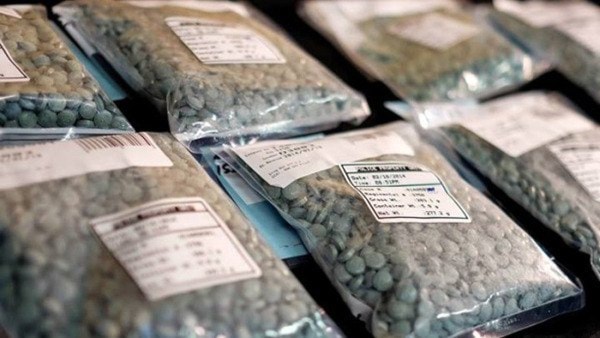Oak Bay emergency services notice a marked rise in suspected drug calls over the past six months.
While they do have suspected overdose calls on occasion, calls have “stepped up” since June, says Deputy Chief Kent Thom, of Oak Bay Police Department.
“We didn’t have a high volume of drug-related calls before that,” Thom said.
Provincial statistics show illicit drug overdoses claimed 914 lives in 2016, with 60 in Victoria as of the end of October. Of the 139 overdose deaths on the Island (as of Nov. 30) last year, 66 per cent tested positive for fentanyl.
Oak Bay police have eight suspected overdoses on record over the six months, though they can’t say whether fentanyl was involved.
“We can confirm that of those eight calls we responded to, we’ve had three deaths,” Thom said. “In two of them, fentanyl was confirmed through toxicology.”
Every system tracks calls a little differently. Recently Oak Bay police, called on to “assist general public,” arrived to help a father deal with his son’s third overdose at the home – where they had naloxone in the home.
From July to December 2016, Oak Bay Fire Department attended nine calls for assistance related to overdoses/poisonings. Their crews administered naloxone once in the six months.
Near the end of 2016, Oak Bay police acquired intranasal naloxone for use among members exposed to opioids such as fentanyl during the course of their work as well as among members of the public suffering an overdose. The department does not mandate officers carry it, but recommend it for officer safety and the public.
“We do have naloxone that our members are taking out,” Thom said. “It’s not compulsory that (officers) take it out, but it is available to them and we strongly recommend that they take it when the go out.”
Not an unusual stance, Thom said. At a recent B.C. municipal Chiefs of Police meeting a show of hands indicated one jurisdiction mandates officers carry naloxone.
Though no officers have yet used it here, “there have been cases province-wide where police officers in possession of fentanyl have used it,” Thom said.
“In a vast majority of cases, whenever we respond to any kind of call that’s involving drugs or an overdose, EHS (emergency health services – ambulance) and the fire department are very close and they’re equipped with naloxone as well.”
* * * * *
Fentanyl:
Commonly used as an anesthetic in hospitals or for long-term pain management, fentanyl is a powerful synthetic opioid approximately 100 times more powerful than morphine that has become popular in the sales of illicit street drugs as either a cutting agent or substitute for heroin or manufacturing pills.
Other illicit drugs such as cocaine and methamphetamine have been found to contain fentanyl or a fentanyl analogue.
Naloxone:
A medication that reverses the effects of an overdose from opioids such as heroin, methadone, fentanyl and morphine. It is available to drug users and first responders in injection and nasal spray forms. Visit towardtheheart.com/naloxone/ to learn more about the provincial Take Home Naloxone program.
RESOURCES
• BC alcohol and drug referral service 1-800-663-1441
• BC mental health and addiction information 1-800-661-2121 (9 a.m. to 4 p.m. Monday to Friday)
• Victoria AA 24-hour support line 250-383-7744
• Victoria NA 24-hour support line 250-383-3553
• Visit www.viha.ca/mhas/resources/ for more resources.
